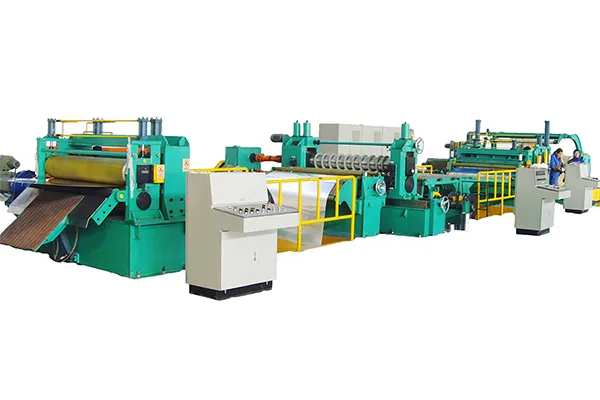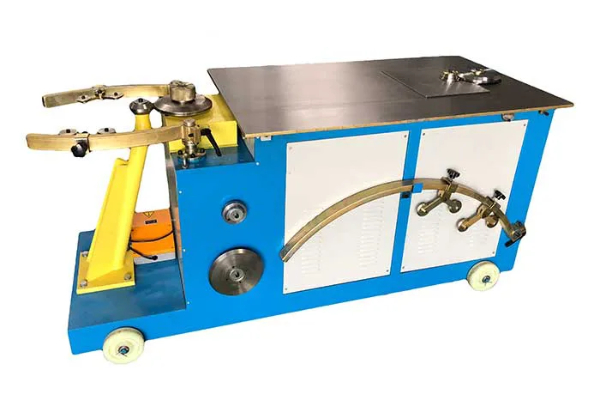
Troubleshooting Common Issues with Steel Strip Cutting Machines
- By:Metmac
- 2024-08-09
- 184
Steel strip cutting machines are essential equipment in the metalworking industry, used to cut steel strips into desired lengths and widths precisely. However, like any machine, they can encounter problems that can affect their performance and efficiency. Understanding the common issues with steel strip cutting machines and their troubleshooting methods is crucial for maintaining optimal productivity and minimizing downtime.
Cutting Accuracy Issues
Misaligned Blades: Faulty alignment of the cutting blades can lead to inaccurate and uneven cuts. Ensure that the blades are properly aligned and tightened according to the manufacturer’s specifications.
Damaged Blades: Worn or damaged blades can cause burrs, uneven edges, and reduced cutting precision. Replace the blades regularly as per the recommended maintenance schedule.
Incorrect Blade Gap: The gap between the cutting blades must be set precisely based on the thickness of the steel strip. An incorrect gap can result in inconsistent cuts or tearing of the material.
Machine Performance Issues
Inconsistent Feed Rate: The feed rate of the steel strip into the cutting machine should be consistent to achieve uniform cuts. Check for any obstructions in the feed system, such as debris or misaligned rollers, that can disrupt the feed rate.
Excessive Friction: High friction between the steel strip and the machine components can lead to premature wear, reduced cutting speed, and increased energy consumption. Lubricate the relevant parts regularly and ensure proper maintenance to minimize friction.
Electrical Problems: Electrical issues, such as loose connections, faulty wiring, or power fluctuations, can disrupt the machine’s operation. Conduct regular electrical inspections to detect and resolve potential problems.
Material Handling Issues
Steel Strip Tension: Proper tension on the steel strip is essential for accurate and efficient cutting. Adjust the tensioning system to ensure the strip is taut and securely held during the cutting process.
Excessive Vibration: Excessive vibration can affect the cutting accuracy and cause damage to the machine. Inspect the machine for any loose bolts, unbalanced components, or structural defects that may induce vibration and address them accordingly.
Debris Accumulation: Accumulation of metal shavings or debris around the cutting area can interfere with the machine’s performance. Regularly clean and remove debris to prevent jamming or damage to the machine components.
By understanding the common issues with steel strip cutting machines and their troubleshooting methods, operators and maintenance professionals can effectively address problems, minimize downtime, and ensure optimal performance of their equipment. Regular inspections, proper maintenance, and timely troubleshooting are essential for maintaining the machine’s reliability, precision, and efficiency.
-
Finding the Right Partner: Your Guide to Premium Sheet Metal Laser Cutting Machines for Sale
2025/12/23 -
METMAC: Defining Excellence Among Sheet Metal Laser Cutting Machine Manufacturers
2025/12/23 -
Unleashing Power and Precision: The METMAC Plasma Sheet Metal Cutting Machine
2025/12/23 -
CNC laser cutting machine sheet metal-Precision Redefined: The METMAC CNC Laser Cutting Machine for Sheet Metal Mastery
2025/12/23
-
Advanced Sheet Metal Rolling, Laser Cutting, and Folding Machines for Precision Fabrication
2025/10/31 -
High-Performance Sheet Metal Bending and Cutting Machines for Modern Fabrication
2025/10/31 -
High-Quality Sheet Metal Equipment for Sale: Efficient Solutions for Modern Manufacturing
2025/10/31 -
High-Performance Sheet Metal Equipment for Sale: Forming and Shearing Solutions for Modern Fabrication
2025/10/22
-
A Guide to the Latest Innovations in Sheet Metal Folding Machines
2024/11/29 -
Key Features to Consider When Investing in a Sheet Metal Folding Machine
2024/11/28 -
Enhancing Precision with Advanced Sheet Metal Folding Machines
2024/11/27 -
How to Choose the Right Sheet Metal Folding Machine for Your Workshop
2024/11/26







